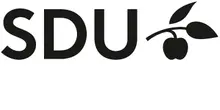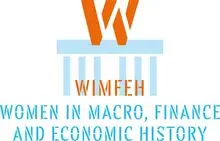Economics Terms A-Z
Macroeconomics
Read a summary or generate practice questions using the INOMICS AI tool
Macroeconomics is one of the two main branches of economics, the other being microeconomics. Macroeconomics is a vast field with many sub-disciplines that attempt to answer questions about how the world and the various markets within it work in the long run.
Compared to the more agreed-upon and orthodox microeconomics, there is more ongoing macroeconomic research and debate still shaping the discipline. While microeconomics focuses on the behaviors of individuals, households, or firms, macroeconomics is more concerned with topics like employment, international trade, and economic growth.
Areas of study for a macroeconomist include: How can economic growth be stimulated? What drives inflation? How should the central bank set interest rates to help the economy recover? What factors cause unemployment and how can government policies improve the conditions of the labor market? Should we impose tariffs on foreign goods to protect domestic markets?
Varying schools of macroeconomic thought have developed due to the extreme complexity of these questions. These schools are informal and are defined by groups of economists, each of whom share similar views about how the economy works. Some of the core ideas that often form the basis of a school include: how money affects the rest of the economy, whether markets are efficient, the rationality and efficiency of individuals, and whether intervention into markets is good or bad for society. Of course, this is a simplification, and there are other points that macroeconomists may disagree on.
Some well-known schools of macroeconomic thought include: the neoclassical, monetarist, real business cycle theory, and New Keynesian schools. It’s worth noting that often newer schools of thought develop out of old ones. This can happen after a unique event in history surprises economists and challenges their thinking.
Such an event - like the 2008 financial crisis - is usually unexpected. Economists may struggle to explain how it occurred. Afterwards, they will be forced to study why their predictions were wrong, or why their models couldn’t explain the event as it unfolded. This causes them to review their theories and possibly generate new ones.
These new theories proliferate and cause existing schools of thought to grow and change, sometimes enough for us to give them a new name. For example, New Keynesian economists have built on the work of Keynesian economists, but updated their frameworks with the theory of rational expectations. This is why macroeconomics is so dynamic - the real world is constantly forcing economists to challenge their models and explain what is really happening!
Suggested Opportunities
- Professional Training Course
- (Online)
- Posted 1 day ago
BSE Macroeconometrics Courses - Executive Education
at Barcelona School of Economics in Barcelona, España
- Escuelas de Verano
- Posted 1 day ago
BSE Summer School 2026: Economics, Finance, Data Science, and related fields
Starts 22 Jun at Barcelona School of Economics in Barcelona, España
Further Reading
As macroeconomics is dynamic and varied, so too are options for further exploration. INOMICS has published a list of recommended macroeconomics reads already, but there are more good finds out there, particularly for those interested in specific events.
For instance, much ink has been spilled over the financial market collapse and Great Recession of 2008-2009. An example is Timothy Geithner’s Stress Test: Reflections on Financial Crises. Geithner was the Treasury Secretary of the United States during and after the 2008 financial market crash. His book is a memoir focusing around that event and the failures of himself and others involved, and paints a picture of how those circles of power operated.
Another book that examines those circles of power is All the Devils Are Here: The Hidden History of the Financial Crisis by Bethany McLean and Joe Nocera. The book dives into the complicated relationships between the Federal Reserve, Wall Street, and the Treasury Department that allowed the crisis to occur in the first place.
Good to Know
Macroeconomics may appear less math-heavy and logical than the more orthodox microeconomics, since much of the latter relies on game theory and optimization problems. However, this is not entirely true. Good macroeconomic models rely on microeconomic foundations, and then build further. Or, they directly model the overall economy using quantitative models built on data.
Aspiring macroeconomists will benefit from studies in areas such as advanced calculus and differential equations, as models like the dynamic stochastic general-equilibrium model (DSGE) rely on those techniques. Graphs are used often to help make sense of economic relationships alongside the math. Of course, a good understanding of introductory economics courses is also essential. So is a drive to discover the answers to difficult questions and understand the linkages between different parts of the economy. When the unexpected happens, and previous beliefs appear to be wrong- that is when the macroeconomist is most excited to get to work!
-
- Assistant Professor / Lecturer Job, Professor Job
- Posted 1 week ago
Lecturer / Senior Lecturer in Economics
At University of Canterbury in Christchurch, Nueva Zelanda
-
- Assistant Professor / Lecturer Job
- Posted 1 week ago
Assistant Professor of Finance and Economics
At Eastern Kentucky University in Richmond, Estados Unidos
-
- Conferencia
- Posted 1 week ago
45th RSEP International Multidisciplinary Conference
Between 4 Feb and 5 Feb in Lisbon, Portugal














